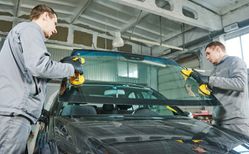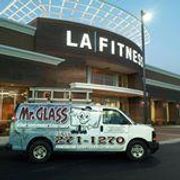
When glass breaks, it often creates large shards that can be dangerous to touch or pick up. However, that isn't always the case. Safety glass is designed to break in a way that makes it less sharp, and the strength and flexibility of the material mean it's less likely to break at all. Learn more about this type of glass and its typical applications below.
What Are the Different Types?
Tempered glass is the most common type of safety glass. It's created by first heating the glass uniformly and then quickly cooling it. This toughens the material and makes it four times stronger than regular glass.
Laminated glass is created by adding a layer of polyvinyl butyral (PVB) between two pieces of glass. The material is then sealed via pressure and heat. Laminated glass flexes before it breaks, meaning greater force is required to crack it. When it does break, the pieces stick to the PVB and don't fall.
 Georgian wired glass is created by adding a piece of mesh wire in the glass. This wire doesn't make the glass stronger, but does keep the shards in place if it's broken.
Georgian wired glass is created by adding a piece of mesh wire in the glass. This wire doesn't make the glass stronger, but does keep the shards in place if it's broken.
Which Glass Is Best?
Tempered glass is by far the most common type of safety glass. Since it can't be cut or drilled, it's a popular option for storefronts and side windows in cars. However, this doesn't make it the best for every application.
Laminated glass is commonly used in windshields, since this surface needs to be able to withstand greater force. Wired glass is also typically used in fire-rated doors and windows.
If you’re in the market for safety glass, contact the team at Mr. Glass in Rochester, NY. This family-owned business has served the area for over 40 years, providing fast and affordable service to local residents. No matter what you need glass for, these experts can help you find the ideal option. Visit their website to learn more about their services, or call (585) 271-1270 to schedule glass installation or windshield replacement.
About the Business
(331 reviews)
Have a question? Ask the experts!
Send your question

